
|   |

|   |
Ghora the Grotesque Goddess - Tapati Chowdhurie e-mail: tapatichow@yahoo.co.in March 7, 2022 The word grotesque does not apply to gods and goddesses. Gods are supremely perfect. Legends note that to accomplish their task of doing good, goddesses manifest themselves in different forms, soon to return to their original embodiments of beauty and grace they are known for. For example, Devi Durga assumes several forms to annihilate Asuras, returning to her benevolent form soon after the deed, where she blesses all living creatures. Lasyakalpa Dance Academy held Ghora Festival - from 21 to 23 January - in which five eminent dancers explored the lesser known goddesses who are feared. Bharatanatyam dancer Rama Vaidyanathan enacted Goddess Uchishta Chandalini; Nishi Dhombol was enacted by Odissi dancer Sharmila Biswas, Footprints in Blood was Manipuri dancer Bimbavati Devi's presentation; Chinnamasta was under Maya Kulkarni's direction, performed by Mesma Belsare, while Mahakali was choreographed by Anuradha J Tadakamalla and performed by Katyayani Kanak. All of them expressed their theme through dance films on their chosen deities, in which it is possible to showcase layers of reality to its viewers. They were cinematic presentations of works created for live performances using filming techniques. Basically a film's intention is to suit the camera. Yours truly felt that since producing dance films with its emphasis on camera work is a new medium for dancers, more experience will hone this art. Dance practitioners and choreographers by nature are creative individuals. The pandemic has made them wear their thinking caps to innovate several ways for the outpourings of their creativity. Each of the five dancers has tried out their acumen in turning their live productions into films. Despite a few pitfalls, the attempt was noble. As regards the portrayal of the grotesqueness of the chosen goddesses, this writer would have liked to see them connected to modern times. Merely choreographing about their grotesque quality as stated in mythology makes them pieces fit to be archived as our ancient heritage. To connect them with contemporary times could have been relevant. 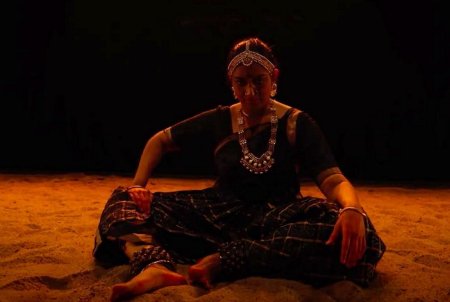 Katyayani Kanak Kuchipudi exponent Anuradha J Tadakamalla has taken the story of Shiva who is the static force of time - Kaal. The dynamic force of Kaal is manifested as Mahakaali. Kali has a grotesque appearance and stands with one foot on Shiva's chest. The choreographer has diligently attempted to explore the ways in which Kali becomes a form and consumes all evil forces. Visual grandeur was the hallmark of the piece. The deep philosophy and concept of Kali is relevant for every age. 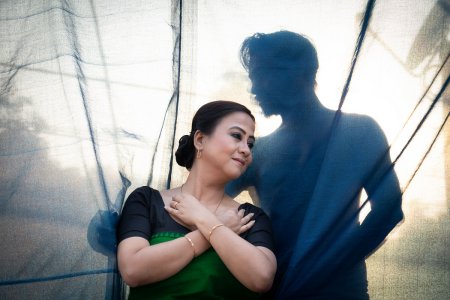 Bimbavati Devi Bimbavati Devi's production 'Footprints in Blood' has drawn inspiration from the momentous feminist revolution of the Meitei women and she has used traditional and ritualistic performing art forms of Manipur in her production. Her stories are of the suffragette uprising of Manipur; the description of the bold Meira Paibis - torch bearers - of Manipur and the last one was the rape and murder of Thanjam Manorama, comparing these women to the warrior Goddess Panthoibi. The piece was appealing because one could understand the connection of contemporary women with Goddess Panthoibi. 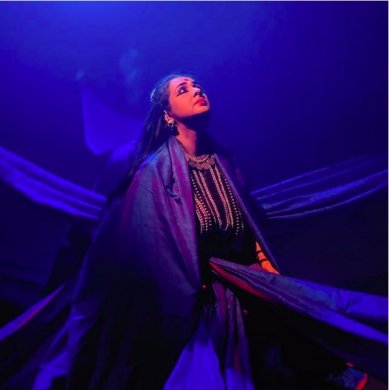 Sharmila Biswas Nishi-Dhombol by Sharmila Biswas was the mystic dance of a village goddess, who is shrouded in darkness, merciless and one who cannot be seen or heard. The villagers think she is the protector to the people of Kheergram in Bengal. According to the story, the Devi dwells in the water of Kheerdighi - Kheer lake. From there she supposedly emerges every night and goes to the temple, where she dances the dance of creation and destruction. The lone drummer, who plays his drum outside her temple has his eyes and ears covered. His music is an offering to the Devi. When the day breaks she returns to Kheerdighi; till then the villagers lock themselves in their homes in fear. The Devi's dance continues to haunt them. Ritualistically the village folk have been offering their prayers to her and will continue to do so for generations asking her for protection. The presentation ends here, leaving the rest to the imagination of the people. After much research Sharmila has portrayed the grotesque goddess as it exists irrationally in the minds of the people. The choreographer in the next part of her narration could have hinted on a kind of hope for these village folks whose thinking has been arrested for generations. 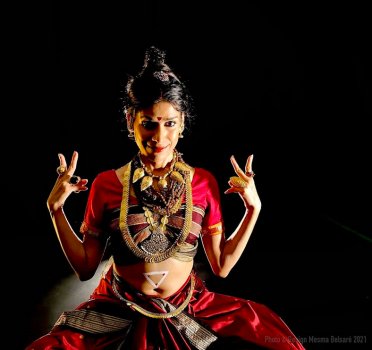 Mesma Belsare 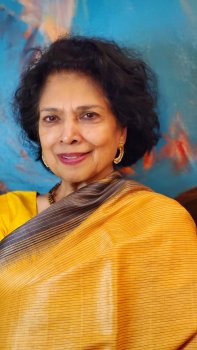 Maya Kulkarni One of the ten Mahavidyas is Chinnamasta / the headless one, supposedly a ferocious aspect of Devi Durga. The self decapitated nude goddess stands on a divine copulating couple, holding her own severed head in one hand, symbolizing the two aspects of Devi - a life giver and a life taker - representing death and immortality. She conveys spiritual self-realization and the awakening of the kundalini-spiritual energy. She represents self-sacrifice. Chinnamasta was directed by Maya Kulkarni and performed by Mesma Belsare. The piece exhibited visual grandeur. 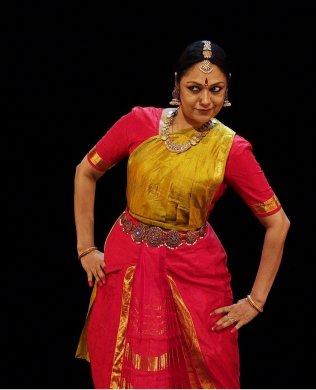 Rama Vaidyanathan Uchishta Chandalini - a tantric form of Matangi, the ninth Devi of Dasa Mahavidya - was by dancer Rama Vaidyanathan. The theme of devouring food that is considered impure was brought out in the vocabulary of Bharatanatyam. The piece was of antique value. The significance of the theme is well known and Rama tried to give the theme a contemporary look. Her presentation was suitable for the proscenium theatre rather than of being the subject matter of a film. The themes were excellent but needed to be debated upon as to why these goddesses were branded as being grotesque. What were the social, economic, religious significances? What were their origin, scope, epistemic justification and the rationality of belief, and such other related issues. Siddhendra-Kuchipudi Art Academy was the main sponsor for this one-of-its-kind film production, while the Department of Language and Culture, Government of Telangana was the Associate Sponsor.  Tapati Chowdurie trained under Guru Gopinath in Madras and was briefly with International Centre for Kathakali in New Delhi. Presently, she is a freelance writer on the performing arts. |